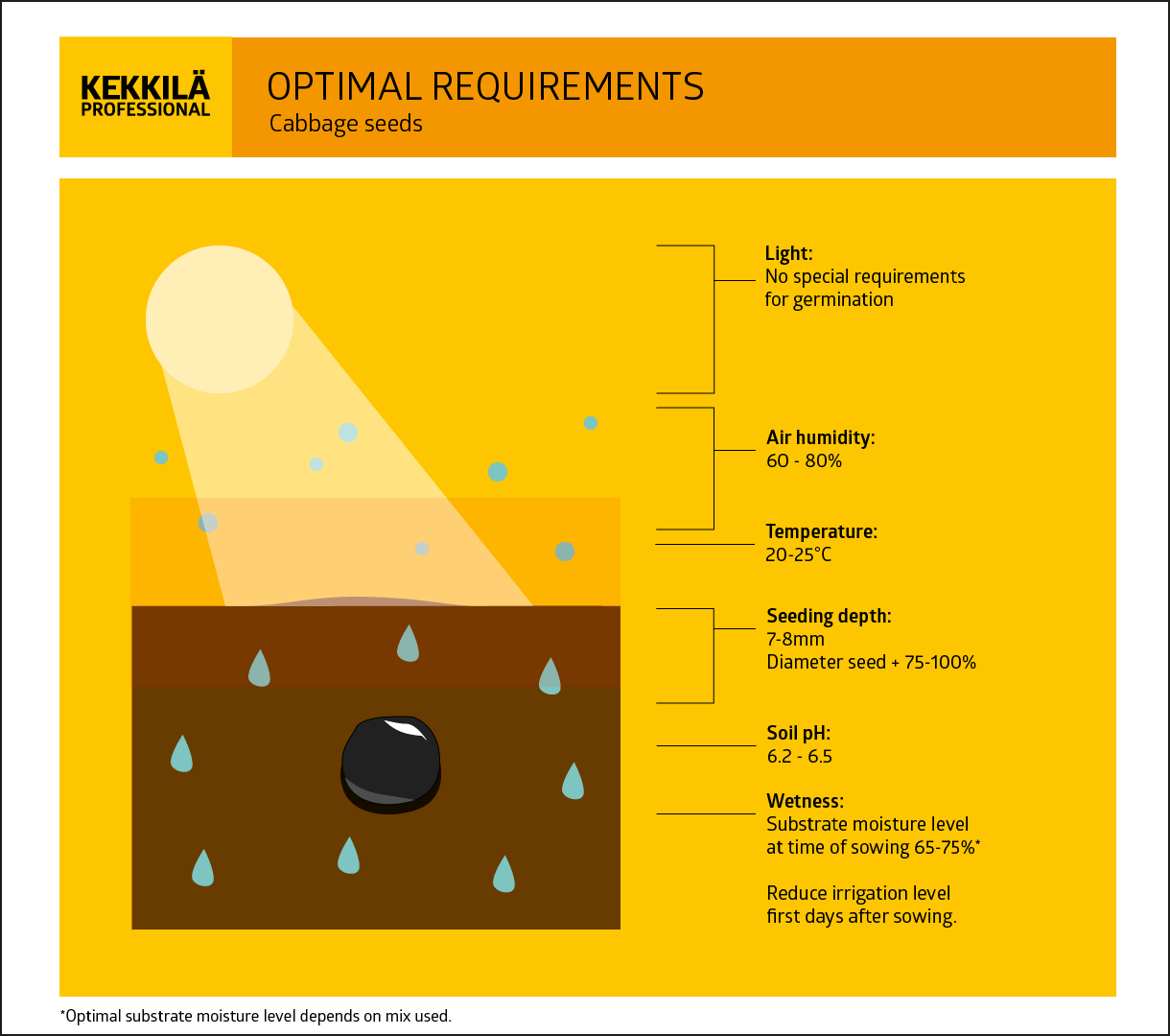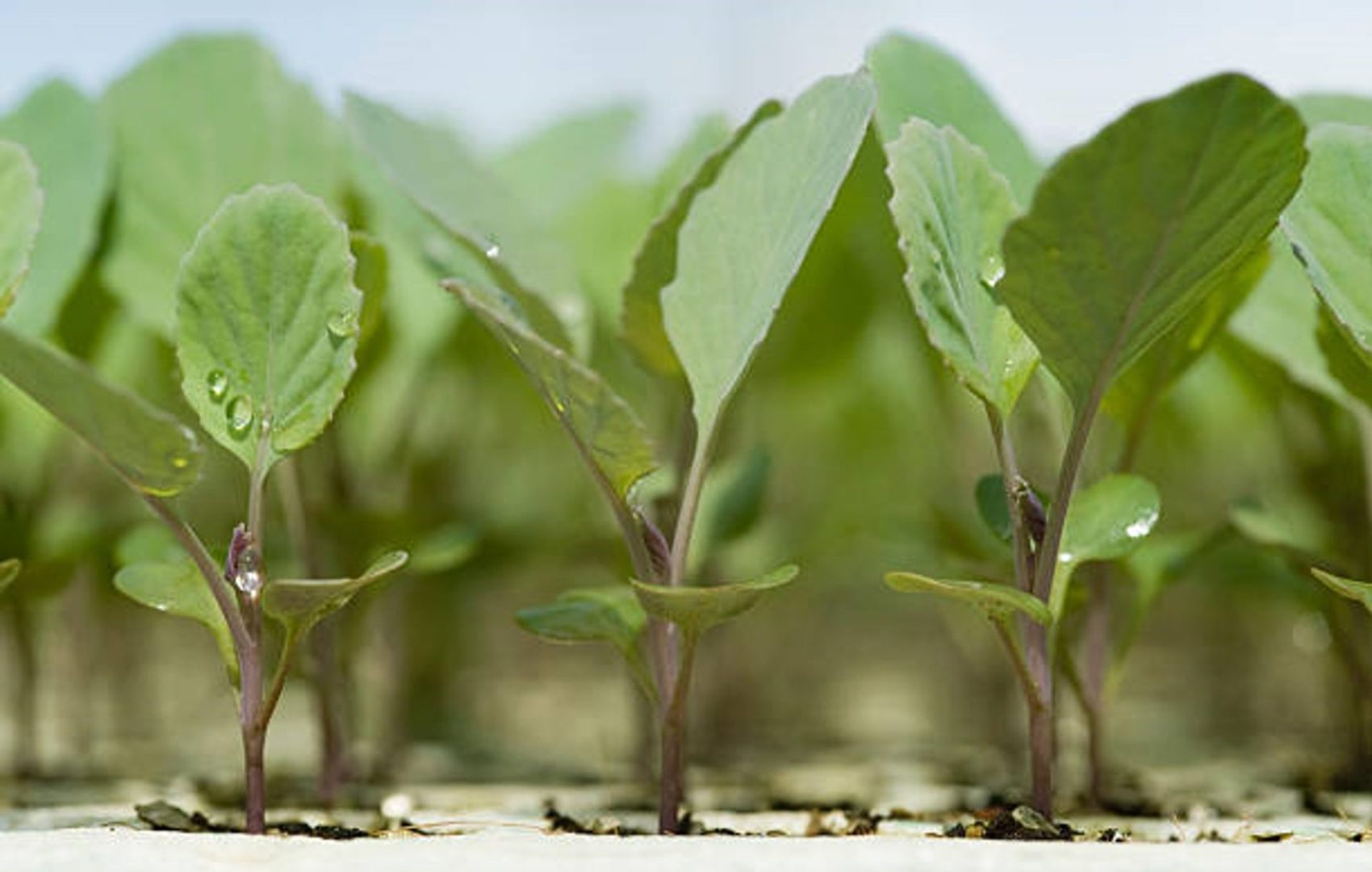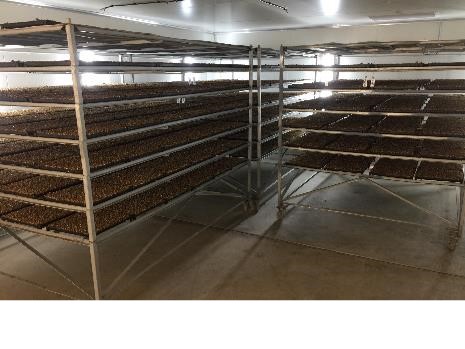How to grow cabbage crops
The cabbage family is a rather wide and versatile plant family that’s grown by many professional cultivators worldwide. Annually, global production reaches approximately 71 million tons of produce. The main vegetables in the cabbage family are broccoli, cauliflower, Brussels sprouts, cabbage, kohlrabi, collards, and kale. Young seedlings from all these different vegetables have very similar growing requirements. Let’s dive into some best practices on how to grow cabbage and broccoli plants.
How to prepare the substrate to optimally grow cabbage
Growing young cabbage plants in trays takes about 4-6 weeks, depending on your growing conditions. The initial phase, in which the seed is sown, but no young plant has emerged is called the germination phase. But before we can get to that phase, it’s important to prepare your substrate for use.
As you might know, compressed bales of substrate should always be loosened before use. If you want to know more about this process, and things that you should pay attention to, please check this previously published article or watch our video:
For cabbage germination, you should aim for an initial moisture content of 65-75%.
To make sure that your young plants won’t have to fight off any contaminations, growers should take care to take hygiene and cleanliness into account. Fill your trays in a clean, contamination-free environment, and make sure that your equipment is also properly disinfected. In addition, also make sure to not place your seedlings directly on the ground. Elevate the trays at least 15 centimetres.
Sowing cabbage seeds
For the germination of the seeds, it’s important to use a substrate with higher organic matter content to provide support for the roots and proper growth.
Seeds should only be covered lightly, allowing the young plant to emerge easily. To achieve this, it’s recommended to sprinkle dry substrate over the seeds directly after sowing. Make sure that the depth of the dry mix is 3-4 mm at most. Sprinkle the dry material loosely over the tray and brush off any excess so that the tray is filled to the top. Finally, lightly spray a little water over the layer.

Water management for cabbage young plants
One of the most important factors in young plant production is the quality of the water that is used in irrigation. To provide your cabbage seedlings with a solid start in life, you need to check if the irrigation water has the right pH and EC levels. Additionally, water temperature and the presence of desired elements are important.
Growers should also take care to select the right shower head. The shower head used for young cabbage plants should be a very fine sprinkler. This head should mimic fine 0.2-0.6mm raindrops. Using the right shower head reduces stress until the seedlings have grown enough and get strong enough to handle less fine irrigation sprinklers.
Young cabbage plants require water that offers the following properties:
| Optimal pH-range | 5.5 – 6.0 |
| Optimal EC-level | < 1.0 dS/m |
| Water temperature | Ideally 25 °C (20 – 26 °C is still okay) Strongly affects growth if wrong |
| Optimal Ca | 4-6 meq/L |
| Optimal Mg | 1-2 meq/L |
| Optimal Na | < 3 meq/L and |
| Bicarbonates | 3 meq/L |
In the germination phase, the optimal Na level is a bit lower and should be around smaller than 0.75 meq/L. It’s also important to reduce the irrigation amount and frequency during the first 2-3 days after sowing. This way the substrate gets abundant time to settle in the trays, offering better protection to the seeds and roots during the most sensitive growing stage, just after germination. Growers should only switch to regular irrigation frequency and amount after 70-80% of the seeds have germinated and started showing green embryonic leaves (also known as cotyledons).
It’s also important to take care to offer your young plants the nutrients they need for optimal growth. This can be achieved through adequate fertigation strategies.

Fertigation for young cabbage plants
The initial irrigation should be done with Calcium Nitrate. Our experts usually recommend using 1 gram of CaNO3 for every litre of water used, depending on the starter fertiliser and growing conditions.
After germination, seedlings can be fertigated with an NPK or Calcium Nitrate solution. If you’d like to work with NPK, you should follow a 1:1 N:K ratio. If you decide to work with CaNO3, 2 grams per litre of water can be used.
Using a germination room to grow cabbage seedlings
Using a germination room can be beneficial to the evenness and speed of germination. Germination rooms offer a slightly cooler, and dark environment for initial germination, which helps the seeds to get the enzyme processes within the seeds going. If you plan to use a germination room, make sure to store your trays there immediately after sowing. They should, in general, stay in the room for approximately 48 hours. This might be different for specific cabbage varieties.
- Air humidity: 80-90%
- Temperature: The temperature in the germination room should at least be 18-22°C. This means that the temperature should be at least 6°C lower than in the greenhouse.
- Moisture: The substrate should be moderately moist. This means that it should be around 60-65%.

If you need any more support or information on how to grow cabbage in the optimal way, please don’t hesitate to reach out to your local Kekkilä Professional distributor.

